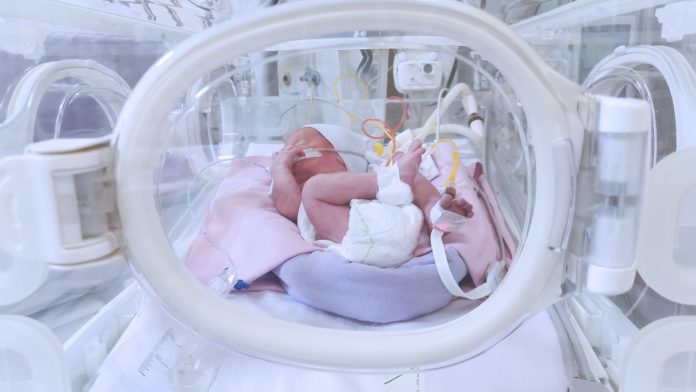
Researchers have identified a cause of preterm labour, opening new possibilities for future innovative treatments.
Preterm labour is the single biggest cause of neonatal mortality and morbidity in the UK. Around 60,000 babies are born prematurely in the UK annually, and the cause has remained an enigma for researchers.
The researchers suggest that a protein called Piezo1 is responsible for regulating the behaviour of the uterus. It keeps the uterus relaxed, ensuring it continues to stretch and expand during pregnancy. By identifying this protein and how it adapts during pregnancy, potential new drugs could be developed to treat or delay preterm labour.
The research is published in The Journal of Physiology.
The role of Piezo1 in the uterus
The muscular outer layer of the uterus is peculiar because it is the only muscle not regulated by nerves and must remain dormant for 40 weeks despite significant expansion and stretch as the foetus develops into a baby.
Researchers from the University of Nevada, USA, studied tissue samples of the smooth muscle of the uterus to understand the mechanistic pathways and the dynamics controlling the uterus, how pregnancy is maintained, and what causes the relaxation of the muscle until labour.
When the uterus tissue is stretched like what happens in pregnancy, it activates the Piezo1 channels. This drives the flow of calcium molecules generating a signalling cascade that activates the enzyme nitric oxide synthase to produce the molecule nitric oxide. This Piezo1 cascade promotes and maintains the dormant state of the uterus.
Piezo1 controls the uterus by working in a dose-dependent manner, upregulated by the chemical Yoda1 and downregulated by a chemical called Dooku1. The researchers found that when Piezo1 is upregulated, the uterus remains relaxed. Still, in preterm tissue, Piezo1 is significantly downregulated – switching off the dormant signalling to the muscle and the uterus initiates labour.
Professor Iain Buxton, Myometrial Research Group at the University of Nevada, USA, said: “Pregnancy is the most impressive example of a human muscle enduring mechanical stress for a prolonged period. Finding Piezo1 in the muscular layer of the uterus means the uterus is controlled locally and is coordinated by a stretch-activated mechanism rather than hormonal influence from the ovaries or the placenta, which has been the assumption.
“It is troubling that there are still no drugs available to stop preterm labour. Thanks to the Nobel Prize-winning discovery of Piezo proteins, which are responsible for how the body responds to mechanical force, and our investigation we are now closer to developing a treatment. Piezo1 and its relaxation mechanism provide a target for us that we could potentially activate with drugs. We need to test this with further studies, and we hope to carry out clinical trials in the future.”
More research is required into preterm labour
The researchers assessed contraction and relaxation in tissue samples compared to various gestational periods, including non-pregnant, term non-labouring, term labouring, preterm non-labouring, and preterm labour. Piezo1 channels were discovered using molecular tools whilst pregnant tissues contracting in a muscle bath were stimulated by a Piezo1 channel activator and inhibitor to characterise the regulation of relaxation.
The researchers note that more research is required to improve our understanding of how all the molecular signals and steps involved in the Piezo1 channel regulate the relaxation of the uterus. They also want to investigate whether more chemicals are working together with Piezo1.









